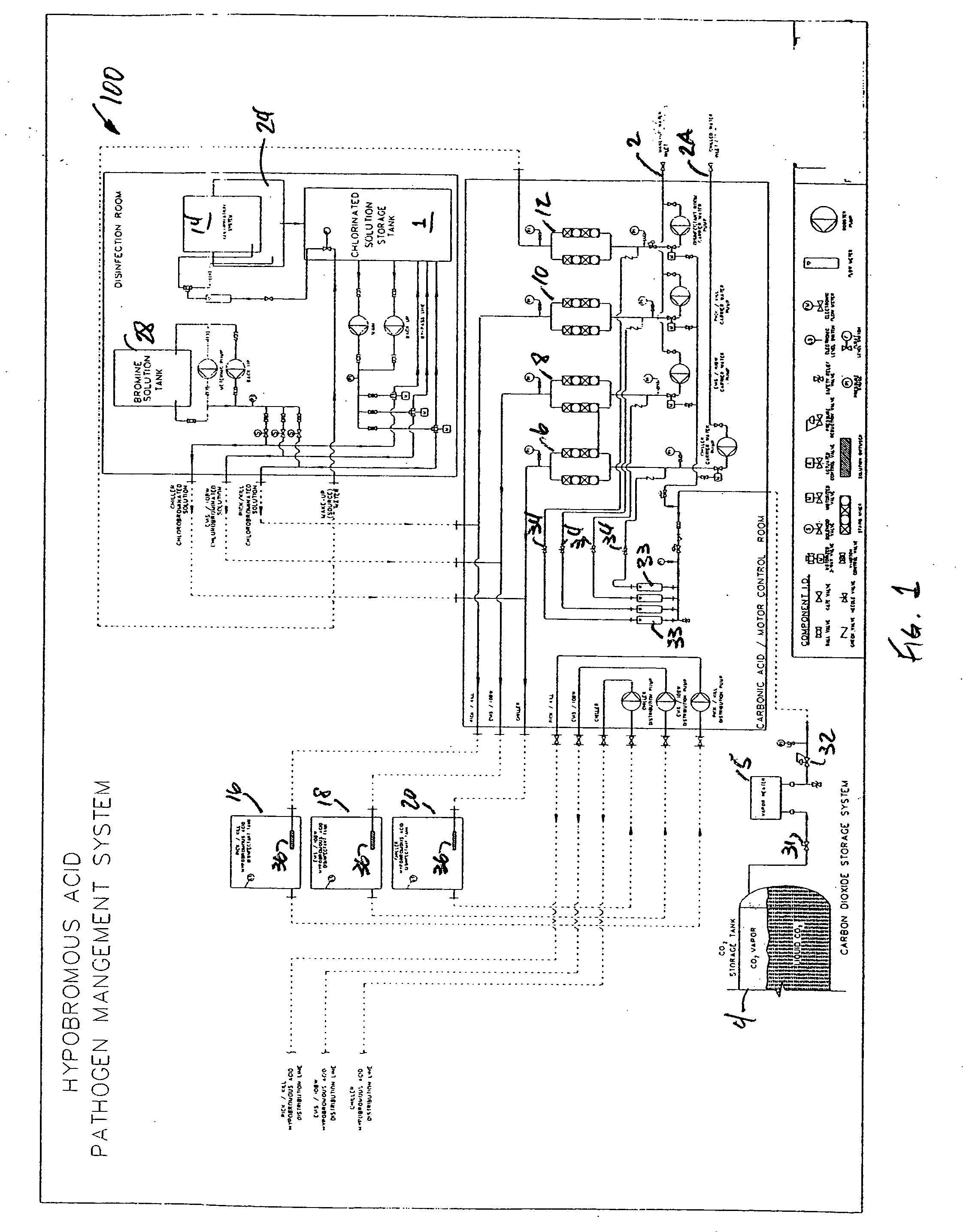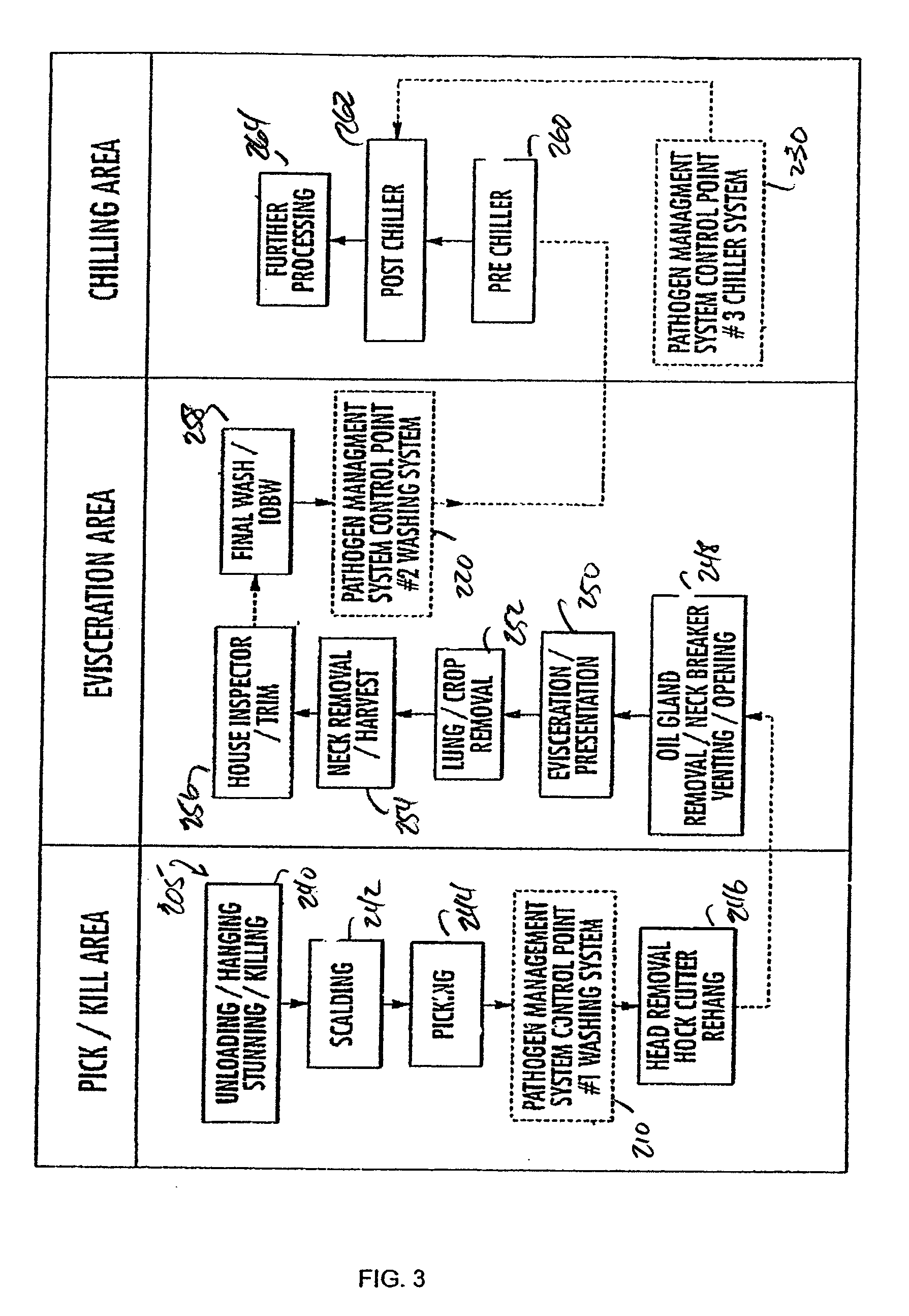Hypobromous acid system
a technology of hyperbromous acid and systemic acid, applied in the field of disinfectants, can solve the problems of many sources of contamination, seafood and chocolate have also been implicated in outbreaks, and certain limitations
- Summary
- Abstract
- Description
- Claims
- Application Information
AI Technical Summary
Benefits of technology
Problems solved by technology
Method used
Image
Examples
Embodiment Construction
[0036] Embodiments of the disclosed systems and methods for controlling contamination incorporate sanitizers such as chlorine, bromine, hypochlorous acid, hypobromous and combinations thereof. Certain embodiments provide a system and method for producing a pressurized solution comprising hypochlorous acid and bromine to produce a solution containing hypobromous acid. Generally, the concentration of the sanitizers in the solution is in an amount sufficient to kill, inactivate, inhibit growth of, or inhibit reproduction of organisms present on a surface treated with the pressurized solution. Generally the surface to be treated comprises a carcass surface or foodstuff surface.
[0037] Hypobromous acid (chemical formula HOBr) is the active or killing form of bromine and reacts with bacteria and organics. In some embodiments, liquid bromine is added to water to form hypobromous acid and hypobromite ions (chemical formula OBr−).
[0038] Bromine is 2.25 times heavier than c...
PUM
 Login to View More
Login to View More Abstract
Description
Claims
Application Information
 Login to View More
Login to View More - R&D Engineer
- R&D Manager
- IP Professional
- Industry Leading Data Capabilities
- Powerful AI technology
- Patent DNA Extraction
Browse by: Latest US Patents, China's latest patents, Technical Efficacy Thesaurus, Application Domain, Technology Topic, Popular Technical Reports.
© 2024 PatSnap. All rights reserved.Legal|Privacy policy|Modern Slavery Act Transparency Statement|Sitemap|About US| Contact US: help@patsnap.com










